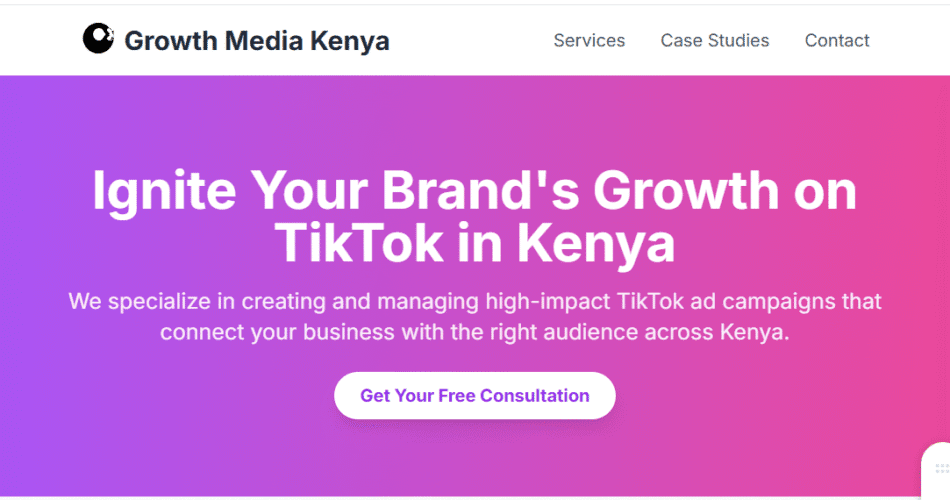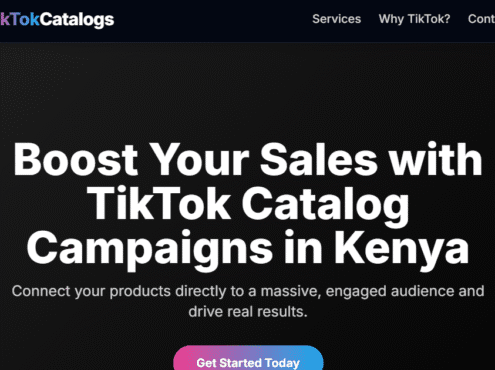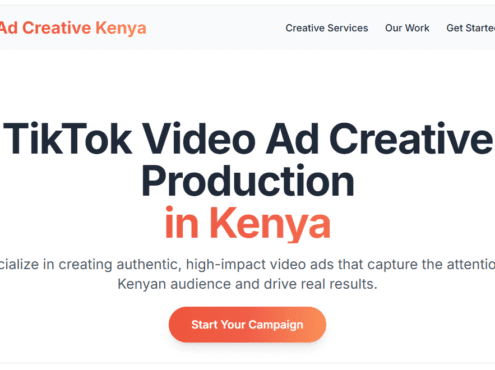TikTok App Install Campaigns in Kenya
-
Delivery Time2 Weeks
-
English levelProfessional
-
LocationUSA, United Kingdom, United Arab Emirates, Nairobi, Kilimani, Kenya, Dubai, CBD Nairobi, Canada, Australia
Service Description
The cost of TikTok App Install Campaigns in Kenya is 80000KES.Get App Install Campaigns in Kenya at a price of 75000KES at Black Shepherd Technologies.
Launch and optimize high-performing app install campaigns on TikTok in Kenya. Target a young, engaged audience with creative video ads, leverage in-app behaviors, and use local insights to maximize your downloads and user acquisition ROI in Kenya’s dynamic mobile market.
The mobile landscape in Kenya is a fertile ground for app install campaigns, with a rapidly growing and highly engaged mobile-first population. The Communications Authority of Kenya (CA) has consistently reported a surge in mobile subscriptions and smartphone adoption, making it a critical market for app developers and businesses looking to expand their digital footprint. As of late 2024 and mid-2025, mobile penetration rates have exceeded 145%, with a significant portion of the population owning smartphones, primarily running on the Android operating system. This dominance of Android (over 90% market share) is a key consideration for campaign strategies, though targeting the smaller, high-value iOS user base is also a viable option.
A successful app install campaign in Kenya requires a multi-faceted approach, leveraging the right platforms and creative strategies to connect with the target audience. Google App Campaigns are a popular and effective choice, offering the ability to reach users across Google Search, Google Play, YouTube, and the Google Display Network. These campaigns are highly automated, using machine learning to optimize for installs and in-app actions based on set goals. For instance, a campaign can be optimized for a “target cost per install” (tCPI) or “target cost per action” (tCPA), ensuring that the ad spend is directed towards acquiring valuable users.
Social media platforms are also powerful channels for app install campaigns in Kenya. TikTok, in particular, has emerged as a powerhouse, especially for youth-focused brands. Its diverse ad formats, from In-Feed Ads to Branded Hashtag Challenges, allow for creative and engaging campaigns that resonate with a large, active user base. Other platforms like Facebook and Instagram, while more mature, still offer robust targeting capabilities and are essential for a comprehensive strategy. The cost per install (CPI) on these platforms can vary, but generally, platforms like TikTok and Google offer a competitive and often lower CPI compared to more mature markets.
When structuring an app install campaign in Kenya, several best practices are crucial for success. First, creative assets are paramount. Ads should feature a variety of high-quality images, videos, and compelling ad copy that are localized to the Kenyan context. This includes using conversational text and recognizable visuals that speak directly to the local user. A/B testing different creative variations is essential to identify what performs best. Second, proper conversion tracking and attribution are non-negotiable. Using tools like Google Analytics for Firebase or other Mobile Measurement Partners (MMPs) is vital for understanding user behavior post-install and for optimizing campaigns based on in-app events, not just downloads.
Budgeting for app install campaigns in Kenya can be flexible, with digital marketing agencies offering a range of services from one-time setup fees to ongoing monthly management. A minimum viable campaign can start with a daily budget as low as KES 500, but a more effective and growth-focused campaign would require a monthly spend of KES 30,000 or more to compete effectively. The cost per install is influenced by various factors, including audience targeting, industry competition, and the quality of the ad creative. Targeting specific urban centers like Nairobi, Mombasa, and Kisumu can be more expensive due to higher competition, but it often yields a better return on investment by reaching a more relevant and affluent audience.The rapid evolution of the Kenyan digital market presents both challenges and immense opportunities. The latest data from the Communications Authority of Kenya (CA) for the quarter ending March 2025 shows mobile subscriptions reaching 76.16 million, with smartphone penetration at 80.8%. This growth is further fueled by the increasing affordability of smartphones from brands like Samsung, Tecno, and Infinix, which collectively dominate the market. This broad access to mobile technology means that app install campaigns can reach a vast and diverse audience, from urban centers to rural areas, though targeting strategies should be carefully segmented.
Moreover, user behavior trends in Kenya highlight the importance of mobile-first and video-centric content. As of early 2025, mobile internet download speeds have seen a significant increase, and platforms like TikTok and YouTube have seen remarkable user growth, with video content becoming a dominant force in digital advertising. This trend underscores the need for app install campaigns to utilize engaging, short-form video creatives that capture attention quickly. The rise of social commerce and in-app advertising, with revenue predicted to reach billions globally, also points to the value of integrating app promotion within social platforms where users are already engaged with shopping and content.
A key challenge is the evolving data privacy landscape, which necessitates transparent data collection practices and ethical marketing to build user trust. Furthermore, the dominance of a few telecommunication providers, such as Safaricom and Airtel, also influences campaign delivery and reach. While Safaricom remains the market leader, Airtel has been gaining ground, which could impact user targeting and network-specific promotions. For advertisers, this means a nuanced understanding of which networks and mobile money platforms (like M-Pesa and Airtel Money) their target users prefer is critical for a frictionless user journey.
Conclusion:
In summary, app install campaigns in Kenya are no longer a simple matter of a one-size-fits-all approach. Success hinges on a deep understanding of the local market’s unique characteristics: a mobile-first, video-savvy population with a high affinity for social media platforms. By leveraging data from sources like the CA, adopting a mobile-first creative strategy, and utilizing advanced targeting on platforms like Google Ads and TikTok, businesses can effectively navigate this competitive landscape. The future of app marketing in Kenya is not just about driving downloads but about creating a holistic user experience, from the initial ad click to in-app engagement and long-term retention. Those who localize their messaging, embrace interactive and video content, and prioritize ethical data practices will be best positioned to capture a significant share of this burgeoning digital market.








